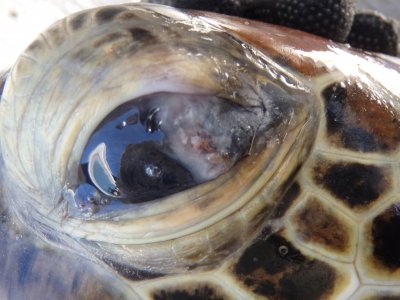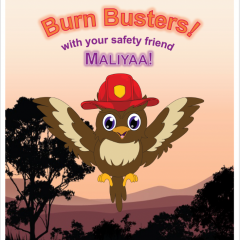
Cobalt, a naturally occurring mineral that can also be an environmental pollutant, has been recorded in the blood of Queensland turtles at potentially harmful levels
Researcher C. Alex Villa from the Queensland Alliance for Environmental Health Services (QAEHS) – a partnership between The University of Queensland and Queensland Health – was lead author of a study on metals in coastal green sea turtles.
Turtles in the Howick Group of islands in far north Queensland’s Great Barrier Reef (GBR), removed from localised human-caused pollution, served as a baseline to which researchers compared populations from Cleveland Bay, Upstart Bay and Shoalwater Bay.
“The turtles tested at Cleveland Bay and Upstart Bay looked healthy on the outside but their blood cobalt levels were very high in comparison to the GBR metal baseline levels,” Mr Villa said.
“At Upstart Bay we found green turtles had cobalt blood levels four to 25 times higher than the baseline established by our research.
“Levels of other metals well above the baseline were also observed in turtles along the Queensland coast, with molybdenum, manganese, magnesium, sodium, arsenic, antimony and lead.
Queensland is one of the world’s largest cobalt exporters, given its close association with copper and nickel ores.
Environmental levels can be increased well beyond normal if released by industrial, agricultural or other human activities, however sources at the study sites were unknown.
Veterinarian and co-author Dr Mark Flint at UQ’s Vet-MARTI unit said 44 per cent of tested Upstart Bay turtles indicated signs of a systematic stressor and an active inflammatory response.
He said elevated levels of cobalt, antimony and manganese correlated significantly with clinical markers of inflammation, and markers indicating stress on turtle organs needed for expelling toxins.
A quarter of the 161 turtles examined at Upstart Bay this year had mild to severe eye lesions.
“We don’t know why this is occurring. The infection appears to be bacterial and not a virus, so it could be another indication that this is a population under pressure,” Dr Flint said.
Co-author Dr Caroline Gaus released findings last year showing green turtles from Queensland’s nearshore habitats were exposed to thousands of chemicals, the effects of which remain unknown.
She said recent findings supported the notion metal exposure is having an impact on the health of coastal populations of sea turtles, however the exact effects and extent require closer examination.
Although Upstart Bay is located on a rural coastline, the Burdekin River has one of the highest discharge volumes of any river in Australia, and encompasses a catchment of 130,000km2.
Cleveland Bay is adjacent to Townsville, where metal processing is a key industry, while Shoalwater Bay is a military area that has intermittent underwater demolition and explosives disposal.
The report was based largely on data from the Rivers to Reefs to Turtles project; a partnership between QAEHS, UQ School of Veterinary Science’s Vet-MARTI unit, WWF-Australia, Queensland Government’s Department of Environment and Heritage Protection, Griffith University, and James Cook University with support from the Great Barrier Reef Marine Park Authority, and funding from Banrock Station Environmental Trust.



